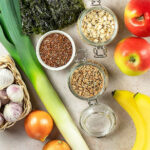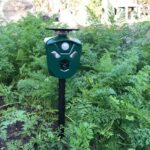How do you feel about eating garden-fresh fruits and veggies every day? We all know how expensive organic food can be, so how great would it be to have your own little farm right in your backyard? Instead of buying questionable products from the supermarket (ones that look three times their normal size), why not put some effort into growing healthy and organic fruits and veggies that your body will love?
Natural and organic produce offers you tonnes of benefits. It improves your skin health, gut function, heart health, cognitive ability and so much more. If you’re looking to live a healthier life, then growing your own food is one of the best decisions you can make.

Choose the Right Vegetable Planters

There’s nothing wrong with planting the seeds directly in the ground, but not everyone has the means or resources to do so. If you live in an apartment or lack backyard space, you can’t just go digging up the earth. That’s why self-watering veggie planter boxes are such a fantastic solution.
They’re modern, sturdy, and durable, and they fit into any indoor or outdoor area. They’re modern, sturdy, and durable, and they fit into any indoor or outdoor area. You can even hang them on your balcony or windowsill for some extra greenery. Plus, they come in all sorts of shapes, sizes, and colours, so you can pick the perfect one for your home.
These planters are ideal for growing a wide range of plants, from gorgeous succulents and flowers to herbs and veggies. There’s no need for weeding or soil prep, and the plants will be well-nourished thanks to the self-watering system.
How Do Self-Watering Vegetable Planters Work?
The best thing about these planters is the low level of maintenance. All you have to do is fill up their reservoirs with water and forget about them for up to six weeks. The plant’s root system draws water that’s released over time through a natural capillary wicking action.
This way, your vegetables receive nourishment when they need it and you don’t have to bother watering them regularly. These veggie planters come with clip-on drip trays, so spills won’t be a problem if you’re bringing your planter into your balcony garden.
While some people enjoy watering plants, others find it bothersome, or simply forget to do this task. In this modern day and age, it’s difficult to manage regularly watering your plants (which is why the self-watering veggie planter boxes are so popular).
We often get caught up in work, social activities, and other obligations, and watering plants falls by the wayside. If you’re not careful, your once-lush plants can turn into dried-out sticks within days.
With a self-watering system, you don’t have to worry about underwatering or overwatering your plants. Their roots will always have access to the moisture they need, so you can go about your life without stress.
Choose the Right Spot
While self-watering veggie planter boxes are easy to take care of, you still need to be careful when it comes to placement. They need to be in an area that receives full sun for at least six hours a day.
If you live in a hot climate, it’s best to put your planter in a spot where it will be protected from the blazing afternoon sun. You don’t want your plants to get sunburned or dried out. But if you live in a cooler climate, you can put your planter in a spot where it will get all-day sun.
Avoid windy areas, as this can cause the soil to dry out too quickly. Whenever possible, try to find a spot where your planter will be sheltered from strong winds.
Your self-watering veggie planter should also be close to a water source. This way, you can easily refill the reservoir without having to lug around a heavy watering can.
The Importance of Soil

Despite the self-sufficient nature of veggie planters, the quality of the soil is still important. Not all soils have the same features, and some types don’t hold moisture as well as others. If you live in an area with sandy soil, your plants will need to be watered more frequently.
To avoid this, it’s best to mix in some organic matter – such as compost – to the soil before planting. This will help the soil hold moisture better and provide nutrients to your plants.
If you’re not sure what type of soil you have, it’s best to get it tested by a professional. This will help you determine what needs to be added in order to create the perfect environment for your plants.
When you’re planting the seeds, make sure to place them at the recommended depth. If they’re planted too deep, they may not get the light they need to grow. And if they’re planted too shallow, they could dry out quite fast.
Tips for Choosing Vegetables
The next step for creating your potted vegetable garden is selecting the right product. As a beginner, you should pick vegetables that are easier to grow. Here are 5 tips for selecting your veggies:
- Plant veggies that you and your loved ones like eating. Don’t bother planting brussels sprouts if no one eats them. If your kiddos like eating green beans, make more of an effort to plant them in your garden.
- Use only as many veggies as you’ll consume. However, there’s always the option of donating extra vegetables to friends, family, or the neighbourhood soup kitchen.
- Plan on caring for your plants during the growing season. Are you taking a summer vacation? Keep in mind that summer is when tomatoes and zucchini grow the fastest. Assign someone to take care of the crops if you are away for a portion of the summer. Or, you can produce cool-season vegetables like lettuce, kale, peas, and root crops in the colder spring and fall months.
- Make sure to use quality seeds. Although seed packages are less expensive than individual plants, you will waste a lot of money and time if you buy low-quality plants. A few more dollars invested in seeds will result in a better harvest.
From my experience, the best veggies for beginner gardeners are lettuce, green beans, tomatoes, zucchini, radishes, spinach, and carrots. Not only are they delicious and healthy, but these plants also introduce some greenery and beautify your outdoor space.






















